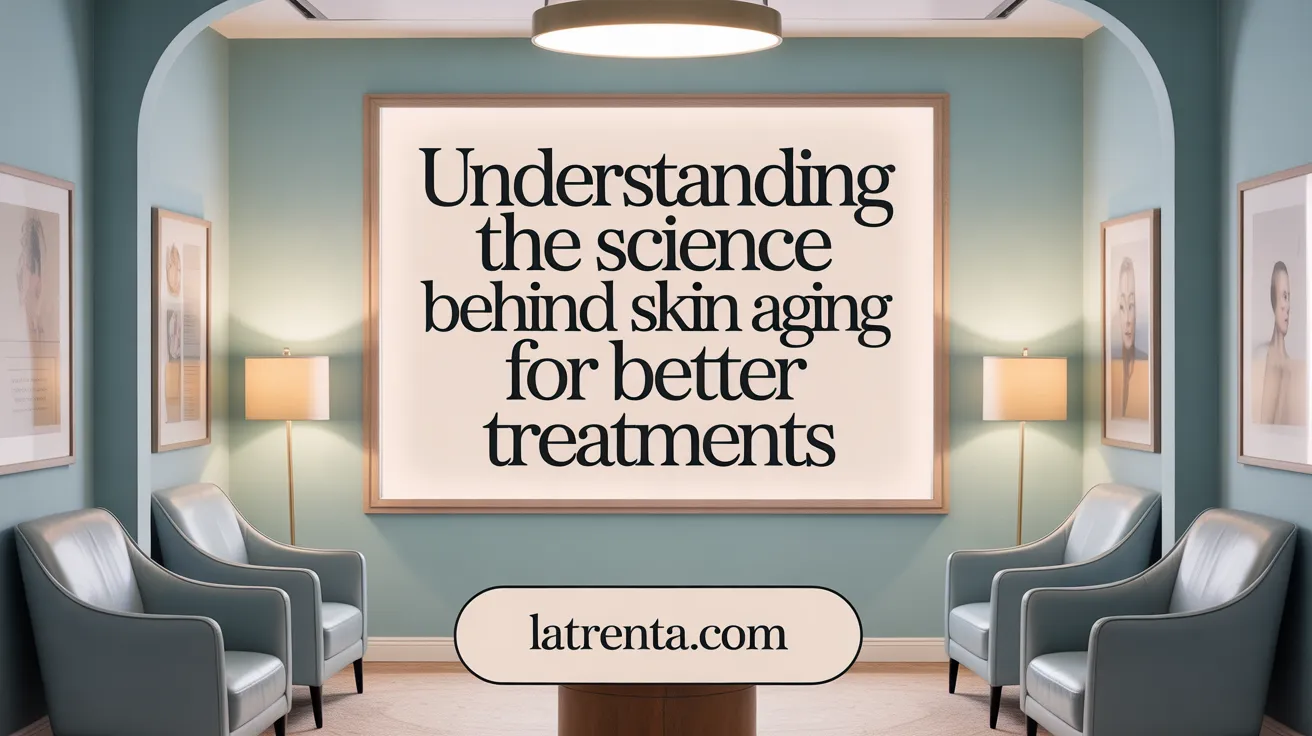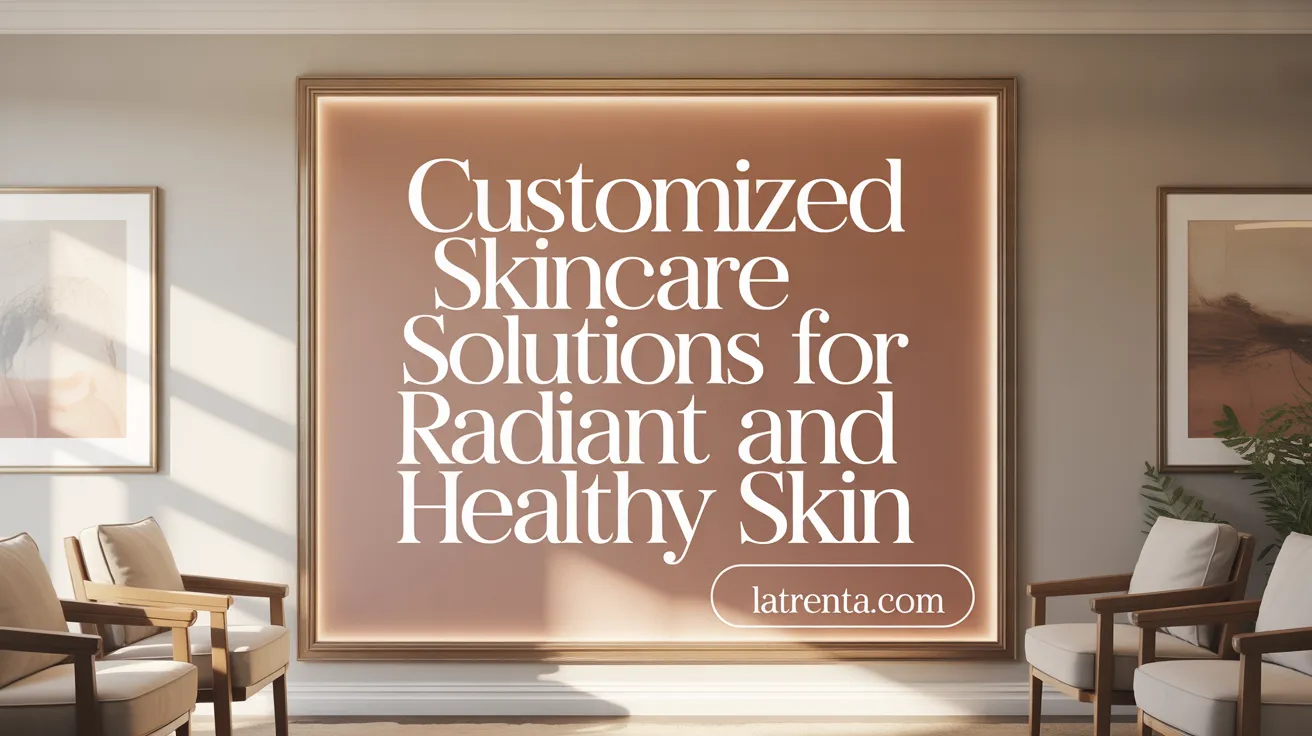Understanding the Interplay of Skin Quality and Aesthetic Treatment Success
Achieving lasting and satisfactory aesthetic results hinges not only on the chosen procedure but fundamentally on the quality of the skin being treated. Skin quality encompasses several biological, environmental, and lifestyle factors that influence how well treatments such as facelifts, fillers, and Botox perform over time. This article explores scientific insights on skin aging, the impact of skin condition on procedure longevity, and the personalized strategies patients and clinicians can employ to optimize and extend aesthetic outcomes. By integrating longevity science with dermatological care, individuals can enhance both their results and overall skin health for sustained vitality.
Skin Quality as the Cornerstone of Aesthetic Procedure Longevity

How does the quality of skin impact the outcomes and longevity of aesthetic procedures?
The condition of the skin is fundamental in determining how well aesthetic treatments perform over time. When skin is healthy, elastic, and well-hydrated, it responds more effectively to interventions such as facelifts, dermal fillers, and Botox. This leads to more natural looks and longer-lasting results.
Conversely, damaged or prematurely aged skin tends to diminish the effects of these procedures faster. Factors like sun damage, smoking, and poor skincare can accelerate aging signs like wrinkles and sagging, which can shorten the durability of aesthetic improvements.
Moreover, the integrity of the skin influences the healing process after procedures. Proper postoperative care and lifestyle choices, including regular use of broad-spectrum sunscreen, hydration, and nutrition, are crucial for maintaining results.
In addition, the quality of the skin affects how well non-surgical treatments, such as laser therapy or microneedling, stimulate collagen growth and repair damage. These treatments can extend their benefits with good skin health.
Overall, skin health, surgical technique, and consistent skincare habits work together to determine how long aesthetic enhancements last. Prioritizing skin quality through ongoing care can prolong aesthetic results and support overall skin vitality.
Biological and Scientific Drivers of Skin Aging Affecting Aesthetic Results

What biological and scientific factors contribute to skin aging and affect treatment results?
Skin aging results from a combination of intrinsic and extrinsic factors, both of which influence the effectiveness and longevity of aesthetic treatments. Intrinsic aging, a natural process influenced by genetics, involves hormonal changes, telomere shortening, and cellular senescence that gradually weaken skin's structure.
Hormonal decline, especially the reduction of estrogen during menopause, plays a significant role in skin aging. Estrogen promotes collagen synthesis, skin elasticity, and hydration. Its decrease leads to thinning, dryness, and increased wrinkling, which can partly be reversed with hormone replacement therapy (HRT). However, most clinical guidelines do not recommend HRT solely for skin rejuvenation due to limited specific evidence.
External factors, known as extrinsic aging, such as UV radiation, pollution, and environmental toxins, accelerate skin damage. These stressors cause oxidative stress, generating reactive oxygen species (ROS) that damage DNA, proteins, and the extracellular matrix. This process diminishes collagen and elastin, vital for skin firmness and elasticity.
At the cellular level, processes like oxidative stress, cellular senescence, and telomere shortening weaken skin regeneration. Senescent cells secrete inflammatory mediators that further degrade tissue, promoting wrinkles and sagging. Epigenetic alterations—changes in DNA methylation patterns—also influence aging signs by affecting gene expression related to collagen production and inflammation.
Assessment of skin aging now includes molecular approaches, such as epigenetic profiling, which can indicate biological age and guide personalized aesthetic treatments. Interventions targeting these processes include antioxidants, collagen-stimulating procedures, and regenerative therapies that aim to repair and rejuvenate skin at a cellular level.
Understanding these biological and scientific mechanisms helps clinicians tailor treatments that best address the root causes of skin aging, improving both immediate appearance and long-term skin health. Emerging treatments in longevity science focus on modulating oxidative stress, enhancing collagen synthesis, and reversing cellular aging to extend skin vitality and overall health.
| Factor | Impact on Skin Aging | Related Treatment Approaches |
|---|---|---|
| Intrinsic Aging | Genetic programming, hormonal decline, cellular senescence | Hormone therapy, anti-aging skincare, cellular rejuvenation |
| Extrinsic Aging | UV damage, pollution, toxins | Sunscreen, antioxidants, laser therapy |
| Cellular Processes | Oxidative stress, telomere shortening, epigenetics | Antioxidants, epigenetic modifiers, regenerative medicine |
| Collagen Degradation | Loss of collagen and elastin | Collagen peptides, microneedling, laser skin tightening |
In conclusion, skin aging is a complex interplay of biological processes and external influences. Advances in scientific understanding continue to drive innovations in aesthetic treatments that target these fundamental aging mechanisms, aiming for more effective and longer-lasting results.
Hormones, Aging, and Epigenetics: The Invisible Factors Shaping Skin Longevity

How do hormones, aging, and epigenetics influence skin quality and the longevity of aesthetic treatments?
Hormonal changes, particularly the decline in estrogen levels during menopause, significantly impact skin health. Estrogen promotes collagen synthesis, maintains skin elasticity, and enhances hydration. As estrogen decreases with age, the skin becomes thinner, drier, and more prone to wrinkles and loss of firmness.
Beyond hormonal shifts, epigenetic modifications—changes that affect gene expression without altering DNA sequence—play a pivotal role in skin aging. These include DNA methylation, histone modifications, and microRNA activity. Such changes can impair cellular function, reduce regenerative capacity, and accelerate structural deterioration of the skin.
Aging also involves a decline in stem cell populations and increased oxidative stress, leading to DNA damage and cellular senescence. These processes result in diminished skin repair and resilience, affecting the durability of aesthetic interventions like facelifts, fillers, and laser treatments.
Interestingly, some therapies aim to target these underlying mechanisms. Geroprotective agents and natural compounds are being explored for their ability to modulate epigenetic markers, delay aging signs, and improve skin quality.
Understanding how hormones and epigenetics intertwine allows clinicians to develop more precise treatments, potentially enhancing the longevity of aesthetic results. By addressing these invisible but influential factors, it becomes possible to maintain youthful, healthy skin longer and improve overall treatment outcomes.
This integrated approach underscores the importance of personalized skincare and treatment strategies in the pursuit of sustained aesthetic and biological aging benefits.
Maximizing Aesthetic Longevity Through Personalized Dermatological Care

How can customization based on skin type and aging patterns improve long-term aesthetic results?
Personalized dermatological care hinges on understanding an individual's unique skin characteristics and aging trajectory. Factors such as genetic predispositions, hormonal influences, external environmental exposures, and lifestyle habits shape each person's skin health. Tailoring treatments—like specific laser therapies, filler formulations, or topical regimens—ensures compatibility with skin type and targeted concerns.
Advanced diagnostic technologies, especially 3D skin mapping, play a crucial role in this process. These tools create detailed, comprehensive images that visualize skin layers, collagen density, pigmentation, and structural integrity. By analyzing these data, clinicians can design precise, personalized treatment plans and monitor changes over time, adjusting interventions for optimal results.
Moreover, understanding individual aging patterns helps determine the ideal timing and type of aesthetic procedures. For example, patients with accelerated collagen loss benefit from early intervention with collagen-boosting treatments, which can prolong youthful skin and reduce the need for more invasive procedures later.
What advanced diagnostic technologies like 3D skin mapping offer in personalized care?
3D skin mapping is an innovative imaging technique that captures high-resolution, multi-dimensional images of the skin. It assesses various parameters including wrinkles, pigmentation, elasticity, and volume loss. These assessments enable practitioners to evaluate baseline skin condition with precision and establish objective benchmarks for progress tracking.
Such technology not only refines treatment selection—whether for neuromodulators, fillers, or laser therapies—but also enhances patient understanding and engagement by visually demonstrating expected improvements. Regular follow-up scans can reveal subtle changes invisible to the naked eye, facilitating timely adjustments and improving treatment longevity.
How are regenerative therapies like stem cells and nanotechnology being integrated into personalized skincare?
Regenerative therapies aim to stimulate the skin's innate healing and rejuvenation mechanisms. Using stem cells and exosomes, clinicians can promote tissue regeneration, boost collagen synthesis, and repair initiated damage from aging or environmental insults. These biological approaches can be customized based on a patient’s specific skin deficiencies and biological responses.
Nanotechnology further enhances personalized skincare by delivering targeted, high-efficacy active ingredients deep into skin tissues. Nanoparticles can improve penetration, stability, and controlled release of growth factors, antioxidants, and collagen stimulators.
Together, these regenerative methods offer a holistic, tailored approach that not only addresses external aesthetic concerns but also improves internal skin health and resilience. This integration of digital diagnostics and biological innovations elevates the standard of personalized dermatological care, paving the way for more effective, durable, and natural-looking aesthetic outcomes.
Pre- and Post-Treatment Skincare for Superior and Lasting Results
What are effective pre- and post-treatment skincare strategies to optimize aesthetic results and ensure their durability?
Preparing the skin properly before aesthetic procedures can significantly enhance outcomes and prolong their effects. Prior to treatment, maintaining skin hydration is essential. Using gentle cleansers helps reduce irritation and inflammation, creating a calm skin environment. Applying broad-spectrum sunscreens with SPF 30 or higher protects collagen and DNA from UV damage, which is crucial because sun exposure can accelerate skin aging and undermine treatment benefits.
Avoiding harsh exfoliants, retinoids, and direct sun exposure in the days leading up to a procedure minimizes inflammation and hyperpigmentation risks. Incorporating targeted skincare products such as antioxidants and ceramides 2–4 weeks beforehand can strengthen the skin barrier and prepare it for recovery.
After the treatment, soothing the skin to reduce redness and swelling is vital. Cool compresses and calming, hydrating moisturizers help facilitate healing. Continuing the use of high-SPF sunscreen prevents UV-related deterioration of the skin during the recovery period.
Additional post-care steps include avoiding active ingredients like retinoids immediately after procedures, which can irritate sensitive skin. Patients are often advised to restrict strenuous activities that may increase inflammation. Following personalized skincare routines based on practitioner guidelines maximizes the effectiveness of the treatment, reduces adverse effects, and ensures results last longer.
In summary, a tailored skincare protocol that emphasizes hydration, gentle cleansing, sun protection, and cautious use of active ingredients is indispensable for achieving optimal, enduring aesthetic outcomes.
Lifestyle, Medical Therapies, and Their Role in Maintaining Skin Vitality
How do skincare, lifestyle choices, and medical therapies contribute to maintaining or improving skin quality and prolonging treatment effects?
Healthy skin is a reflection of both internal and external care. Skincare routines that include ingredients like ceramides, hyaluronic acid, antioxidants, and retinoids play a significant role in strengthening the skin barrier, boosting hydration, and supporting cellular renewal. This not only enhances the skin’s appearance but also prepares it for aesthetic procedures, reducing irritation and improving healing.
Lifestyle choices such as regular use of broad-spectrum sunscreens, gentle cleansing routines, a balanced diet, and adequate hydration are vital. These habits help prevent premature aging, hyperpigmentation, and other skin issues. Managing stress and ensuring sufficient sleep further support skin health, promoting a more resilient complexion.
Medical therapies complement these efforts by actively encouraging skin regeneration. Topical retinoids and antioxidants stimulate collagen production and repair, prolonging the results of treatments like Botox, fillers, or laser procedures. Barrier repair products help maintain skin integrity, reducing post-treatment irritation and breakdown.
A comprehensive approach combining skincare, sun protection, healthy lifestyle habits, and targeted medical therapies creates a synergistic effect. This holistic routine enhances skin's ability to heal, maintains its youthful qualities longer, and maximizes the longevity of aesthetic outcomes. Ultimately, such practices support not only immediate improvements but also promote long-term skin vitality and health.
Incorporating Patient Perspectives: The Value of PROMs in Aesthetic Dermatology
How do patient concerns differ from physician assumptions?
Patients often prioritize factors like skin texture, uneven tone, under-eye bags, and dark circles that physicians may underestimate. Surveys show that 31% of patients express high concern about facial skin issues, highlighting a disconnect with physician focus, which tends to emphasize procedural safety and technical outcomes. Recognizing these differences enables clinicians to tailor treatments more effectively.
Why is patient satisfaction and perceived longevity important?
Satisfaction with aesthetic results does not always align with clinical assessments. Patients’ perceptions of how long results last and their satisfaction with treatment outcomes significantly influence their overall happiness and future treatment choices. For instance, older generations like Baby Boomers express higher concern about crow’s feet and under-eye issues, which impacts both the planning and expected longevity of treatments.
What is the role of validated outcome measures?
Patient-reported outcome measures (PROMs) are essential tools for capturing subjective experiences, including satisfaction, concerns, and perceptions of longevity. While tools like the Dermatology Life Quality Index (DLQI) are frequently used, their measurement validity can be limited. There is a recognized need for more comprehensive, validated PROMs like the proposed Patient-Reported Impact of Dermal Decisions (PRIDD), which can offer nuanced insights into treatment impacts across various patient populations.
How do PROMs enhance clinical practice?
PROMs help clinicians understand patient motivations and manage expectations by providing direct feedback about how treatments influence life quality. They also allow measurement of outcomes in domains relevant to patients, such as improvements in skin texture or reduction of dark circles, over time. Advances in measurement techniques, such as computerized-adaptive testing, are improving the accuracy and engagement of PROMs.
What are current challenges and future directions?
Despite their benefits, many existing PROMs lack validation or comprehensive scope. Future efforts should focus on developing robust, multi-domain tools that can reliably track changes over the long term. Integrating PROMs into routine clinical practice can foster better communication, personalized care, and more meaningful assessment of aesthetic treatment success.
| Aspect | Impact | Details |
|---|---|---|
| Patient concerns | Often underestimated | Skin texture, uneven tone, under-eye issues |
| Satisfaction & longevity | Critical for treatment success | Influences future treatment decisions |
| Outcome measurement tools | Need for validation | PRIDD as a proposed comprehensive measure |
| Clinical benefit | Better understanding patient needs | Tailored treatments and expectations |
| Measurement advancements | Enhance accuracy | Computerized-adaptive tests and digital platforms |
By valuing patient perspectives through validated PROMs, aesthetic dermatology can evolve toward more patient-centered care, resulting in higher satisfaction and more durable, meaningful outcomes.
Optimizing Skin Quality: The Key to Lasting Aesthetic Success
Skin quality profoundly influences not only the immediate results of aesthetic procedures but also their longevity and the patient's overall satisfaction. By understanding the biological underpinnings of skin aging—including hormonal, genetic, and environmental factors—and embracing personalized dermatological care alongside evidence-based skincare protocols, patients can strategically enhance their skin's resilience and appearance. Lifestyle modifications and medical therapies further support these efforts, reinforcing skin health and extending treatment durability. Integrating patient perspectives through robust outcome measures ensures treatments align with expectations and real-world experiences. Ultimately, a holistic and scientific approach to skin quality elevates aesthetic outcomes, empowering individuals to retain youthful vitality and confidence over time.
References
- Facial Aesthetic Priorities and Concerns: A Physician and Patient ...
- A Narrative Review of Skin Quality Changes, Their Aesthetic Impact ...
- The Skin-Longevity Link: Scientific Insights into Aging and Health ...
- Longevity is more than skin deep. sTHe sweet skin longevity Method
- Are Facelift Results Permanent? · Anthony MacQuillan Plastic Surgeon
- Optimizing Aesthetic Facial Surgery Outcomes Following Minimally ...
- Longevity Of Facial Rejuvenation Results Explained
